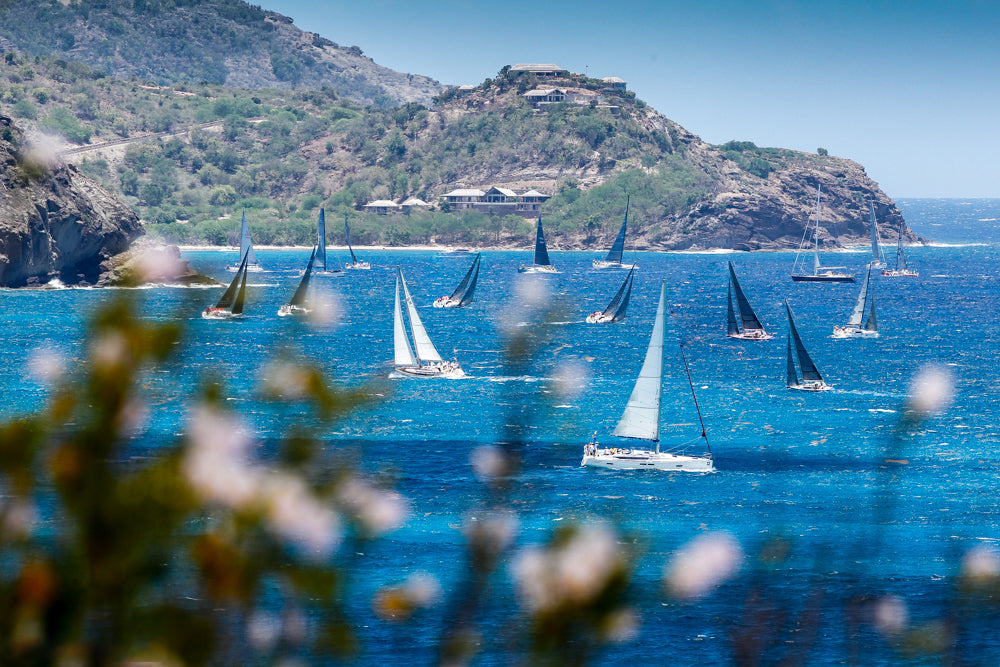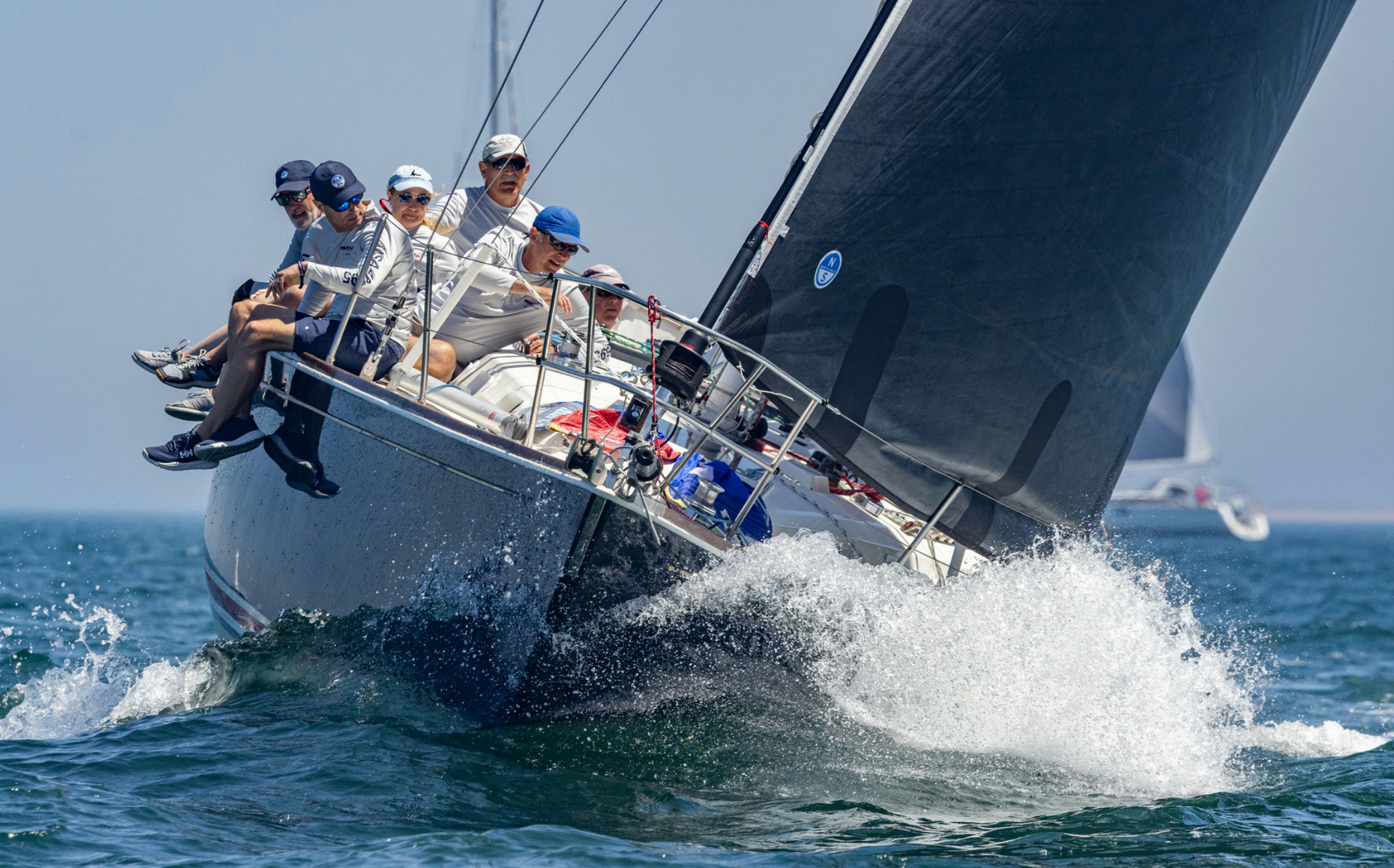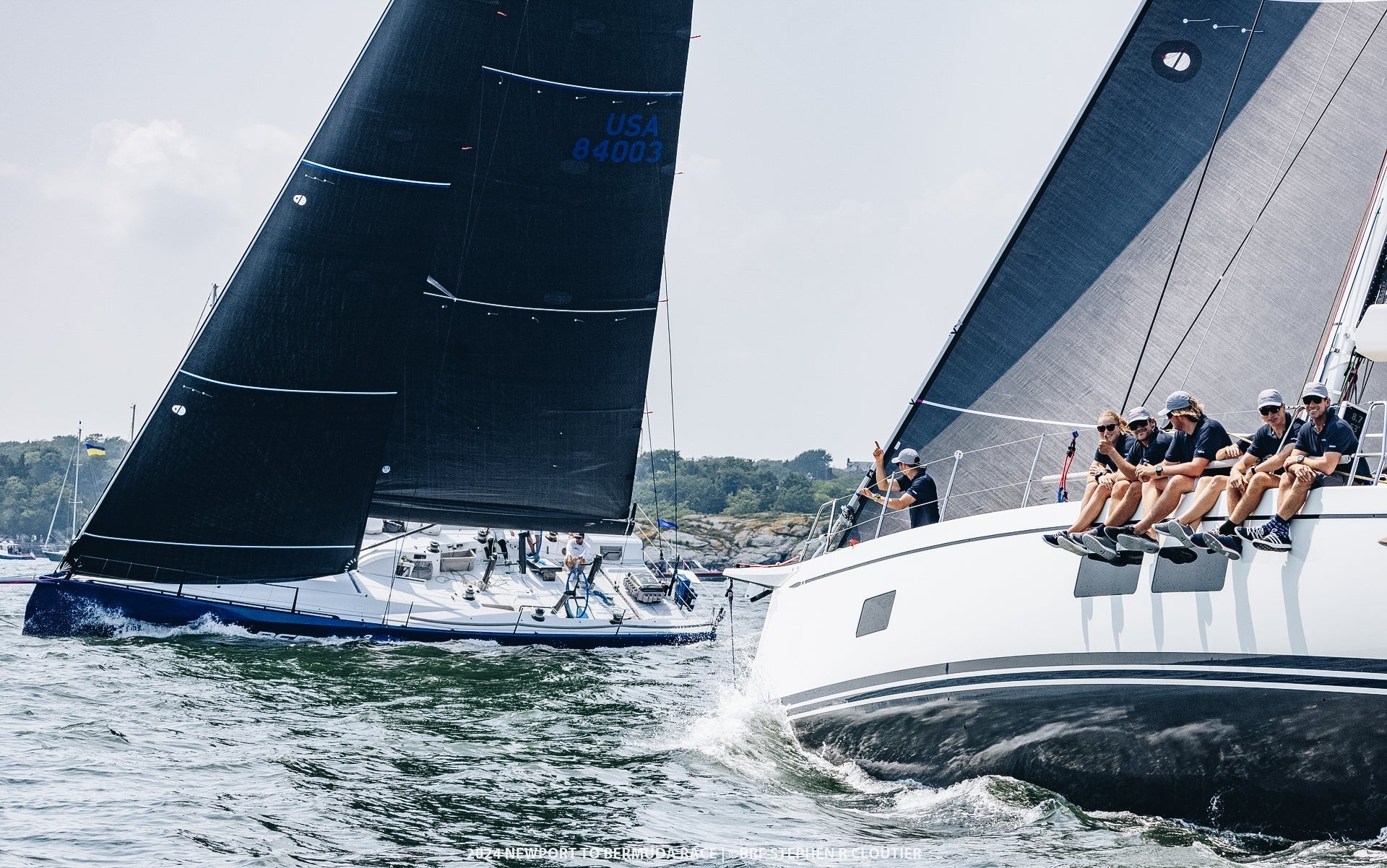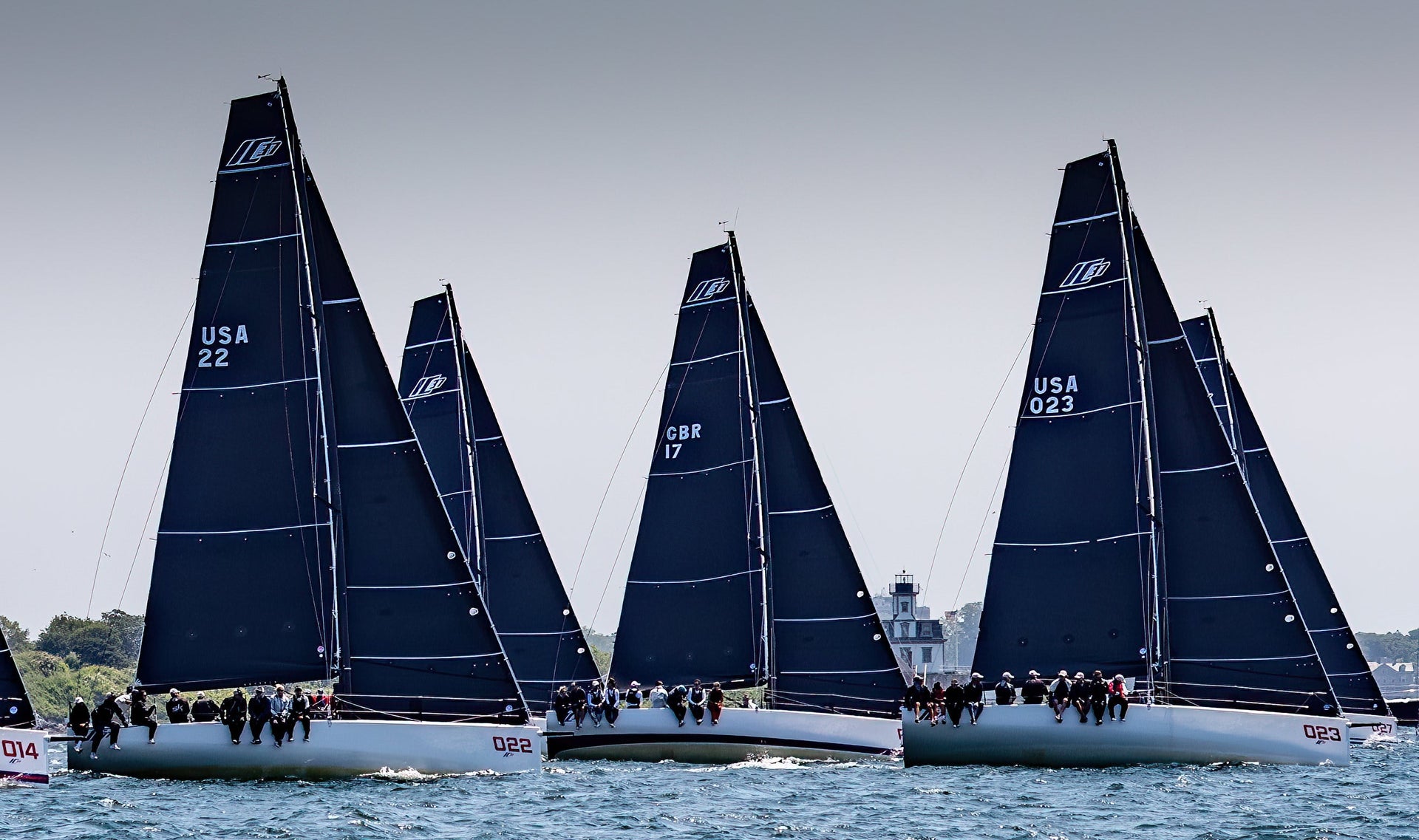CARIBBEAN COMEBACK
CARIBBEAN COMEBACK
Experts Share Thoughts About the 2019 Season

According to Andrew Dove, North Sails Caribbean Area Manager based in English Harbor, Antigua, 2019 is on track to be the best year ever for sailboat racing in the islands.
“We’re having a good year,” Andrew told us, when we caught up with him just after the New Year. “The work is piling in. The Caribbean is foolproof, it’s friendly. And obviously this is one of the ideal places in the world to sail.”
Mike Toppa, who is based at North Sails in Fort Lauderdale and races several Caribbean events, agrees that 2019 is going to be a great season. “After the hurricanes last year, regattas were at maybe 80 percent capacity; this year it seems like everyone’s making up for lost time. We’re all ready to get racing again.”

Organization Increases Numbers
Good planning—of the overall winter calendar, and of regattas—is part of the reason for increased participation across the board, Mike thinks.
“The Caribbean Racing Association has done a really good job coordinating all the schedules around the Caribbean so they don’t overlap. People have the ability to go to any regatta they want without missing out on another they might want to do. All of the events have stepped up their game with good, well-trained, race committees. Laying out courses, managing the regattas as people expect at a world class level.”
“Mike is quite right,” Andrew says. “There’s definitely professional management for racing in the Caribbean. The people who don’t live here participate for a whole range of reasons, but one is that the racing is very good nowadays.”
Andrew is predicting that the Caribbean 600 will have a record number of entries this year. All the events are growing, Mike adds. “It must be something that’s calling people in. Definitely an optimistic feel.”
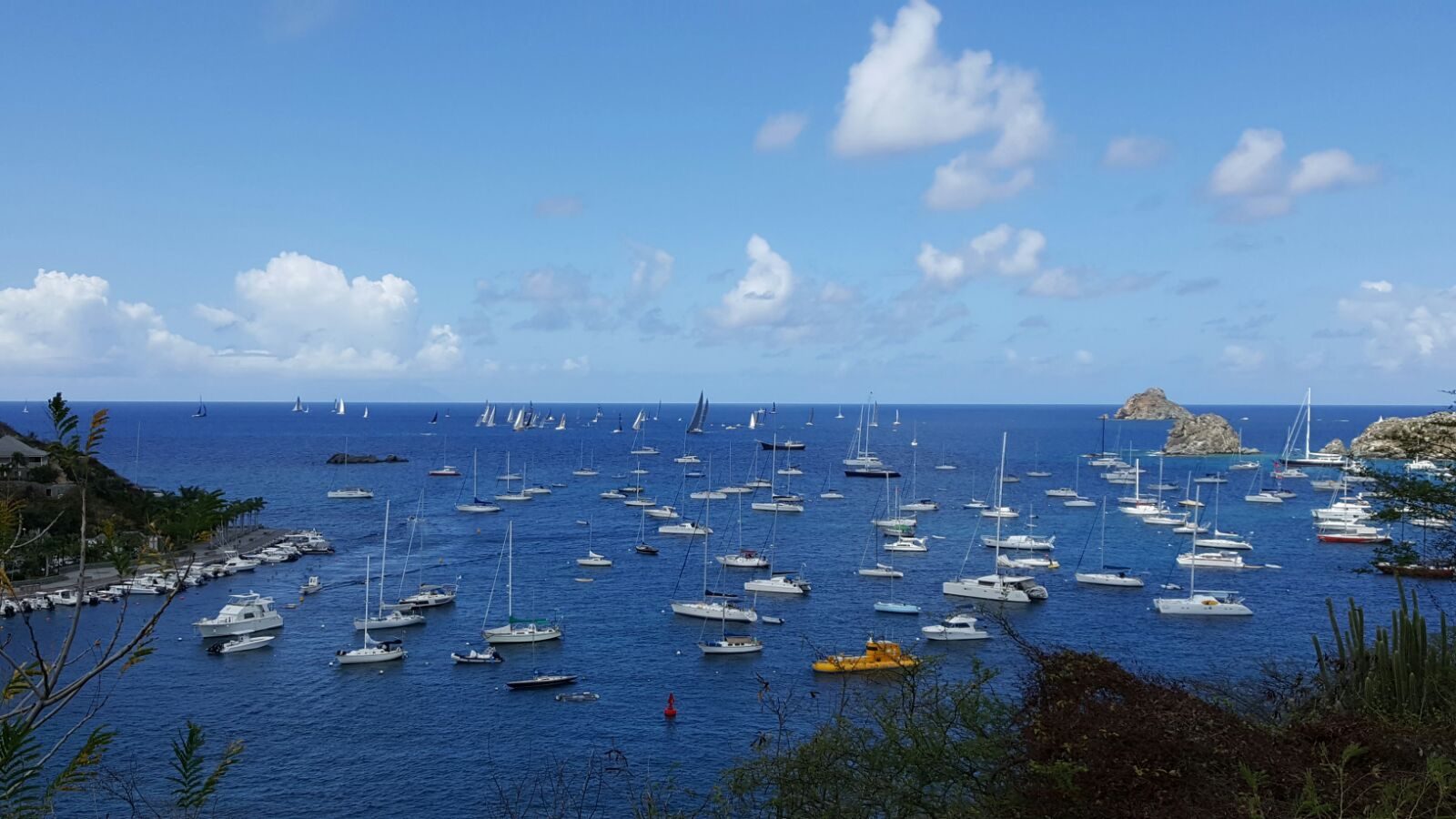
Antigua: Great for Cruisers, Racers, and Duty-Free
Each Caribbean season begins with the Salty Dawg Rally, a group of cruisers who travel south in tandem each autumn. Usually their destination is the Virgin Islands, but last year’s hurricanes sent them to Antigua—and they liked it so much, a large number came back again this year.
“For that week,” Andrew says, “there were events every night. We organized a 3Di evening at the loft, we had videos going, and we were giving away crepes and drinks. Most of the people didn’t have a clue what 3Di was, but now they appreciate its real advantage. And it was quite the party.”
Antigua has become a favorite hub for larger yachts as well because of its easy logistics, Andrew explains. “In the past it was difficult to ship things in and out; now it’s very easy to get provisions and sails delivered. And we’re very lucky with North Sails, they now allow us to deliver sails to the boats and catch up with the paperwork afterwards. Which means that when people come to regattas here and leave things for the last moment, it’s not a disaster.”

Yacht Transports
Another reason the Caribbean is attracting more boats is that it’s now easy to get there without sailing across open ocean.
“In Fort Lauderdale,” Mike says, “a lot of yacht transport ships come in from Europe with a lot of the same boats you see on the racecourse. There are direct ships to St. Maarten and Antigua and different places. The costs are coming down, convenience is up, the scheduling is a lot more regular, and it’s definitely an option a lot of people take advantage of.”
Multihulls Multiply
Andrew says he’s been noticing a larger percentage of multihulls joining the Caribbean regattas. “Five years ago, you’d see one or two. Now there’s a class or even two classes of them.” Adding a widely accepted French handicap system has made it easier for regattas to handle scoring.
At the opposite end of the size and age spectrum, he adds that Antigua will host the 2019 Optimist Worlds in July, out of Nelson’s Dockyard in English Harbor. “That’s a major event because of the number of participants—not only the children but parents and staff. It’s offshore racing because they sail a few hundred meters and they are out to sea.”

3Di: Fewer Overnight Repairs
For this year’s regattas, Andrew plans to race with his customers by day and repair sails by night—though with 3Di, he says, the volume of repairs are way, way down. “In the past whether it be string sails or even 3DL, we would have to do sail repairs throughout the night. Now at big regattas, we’re asked to do small modifications but we’re not actually repairing the sails.” As 3Di NORDAC becomes more popular with cruisers, he predicts that repairs will drop off even more. “Fortunately we have a growing number of customers; if we didn’t, we’d be losing business.”
3Di is a huge advantage over laminated sails in the Caribbean, Mike agrees, because heat and humidity don’t affect 3Di. “We see it here in Florida too; all of a sudden sails are lasting six or seven years. Whereas a string sail would last three years. One of our customers has a 37m Dubois sloop,” Mike continues. “Their 3Di sails are three years old and are doing the St. Barth’s Bucket this year. I was talking to the captain the other day and asked how the sails are holding up, and he said they look like they’re brand new. They’re excited to race and they’ve got the sails to do it.”
“I actually don’t think we can overstate the change 3Di has brought into our market,” Andrew adds. “People here go sailing for more than a couple of hours, so it’s a real advantage. The only big repairs we have now are non-3Di.”
“You’ll get your evenings back,” Mike replies, chuckling.



